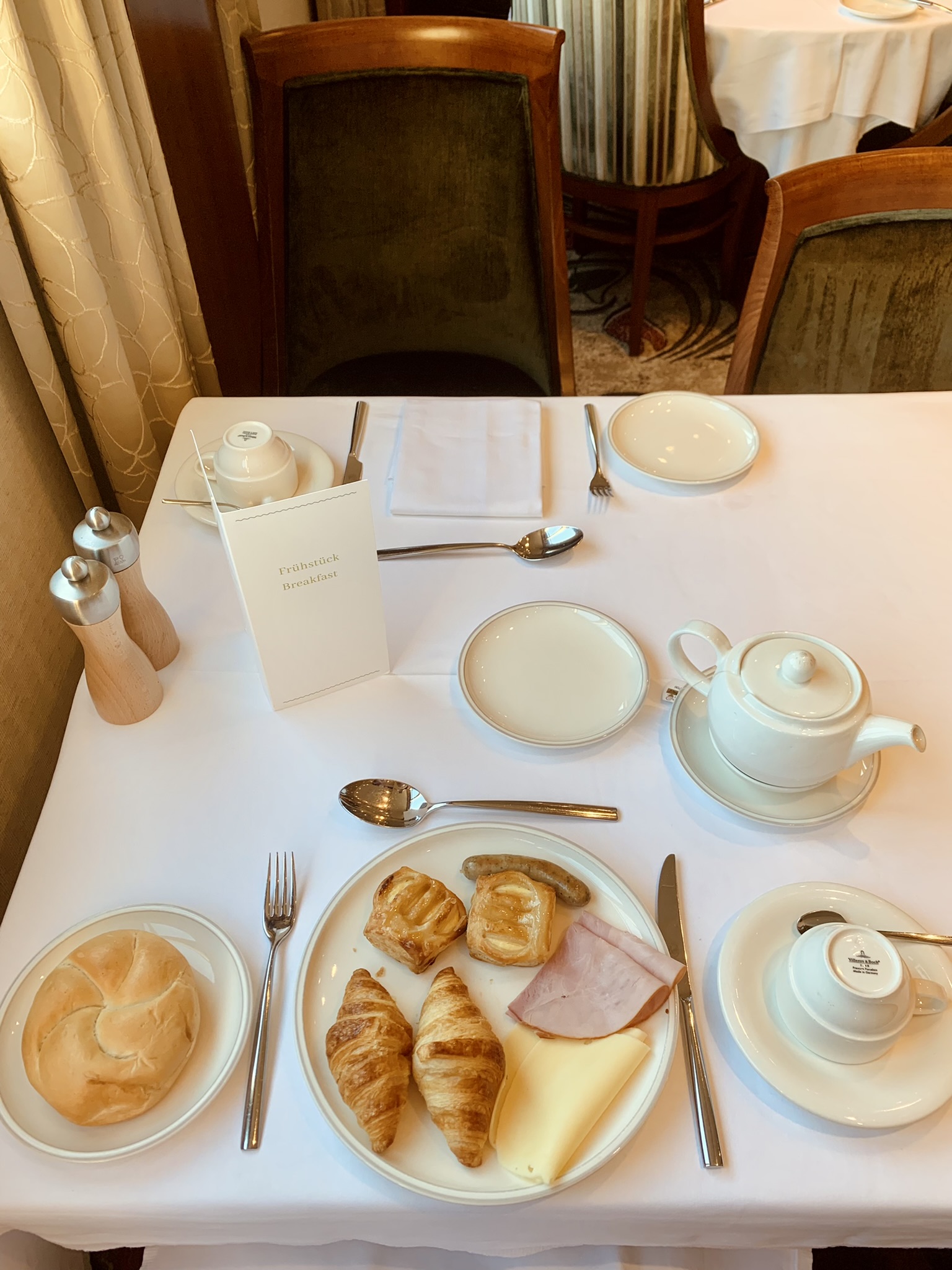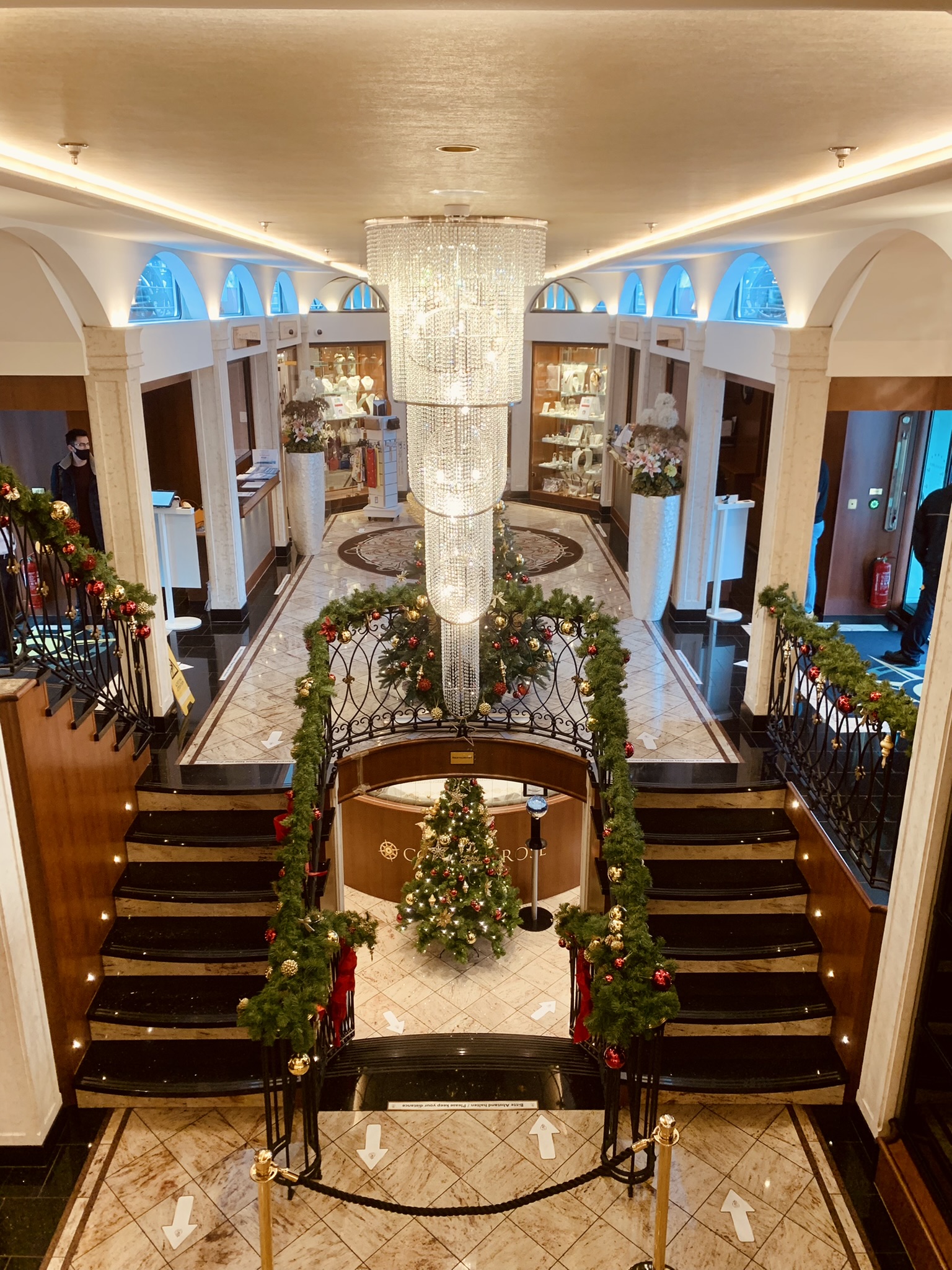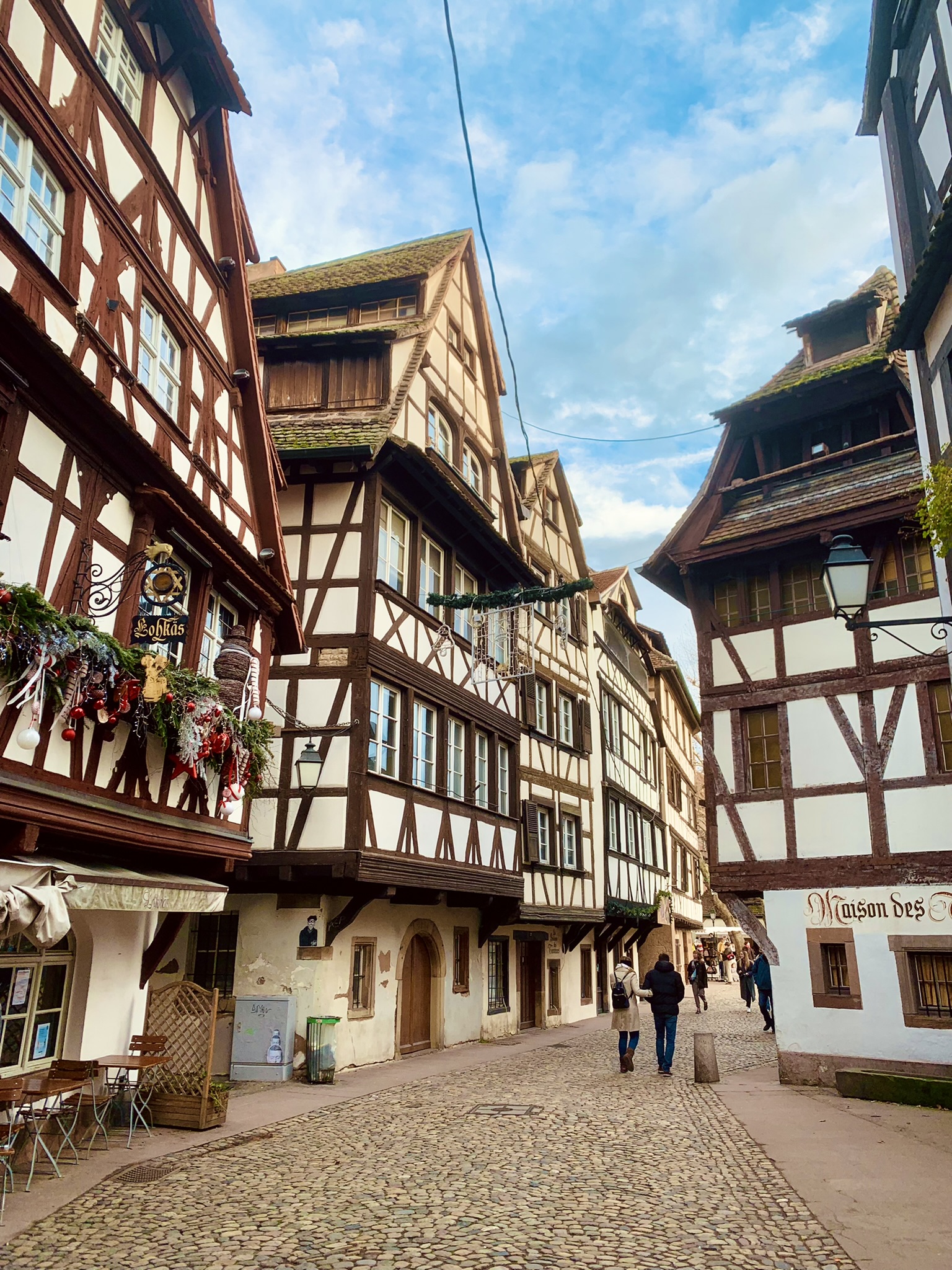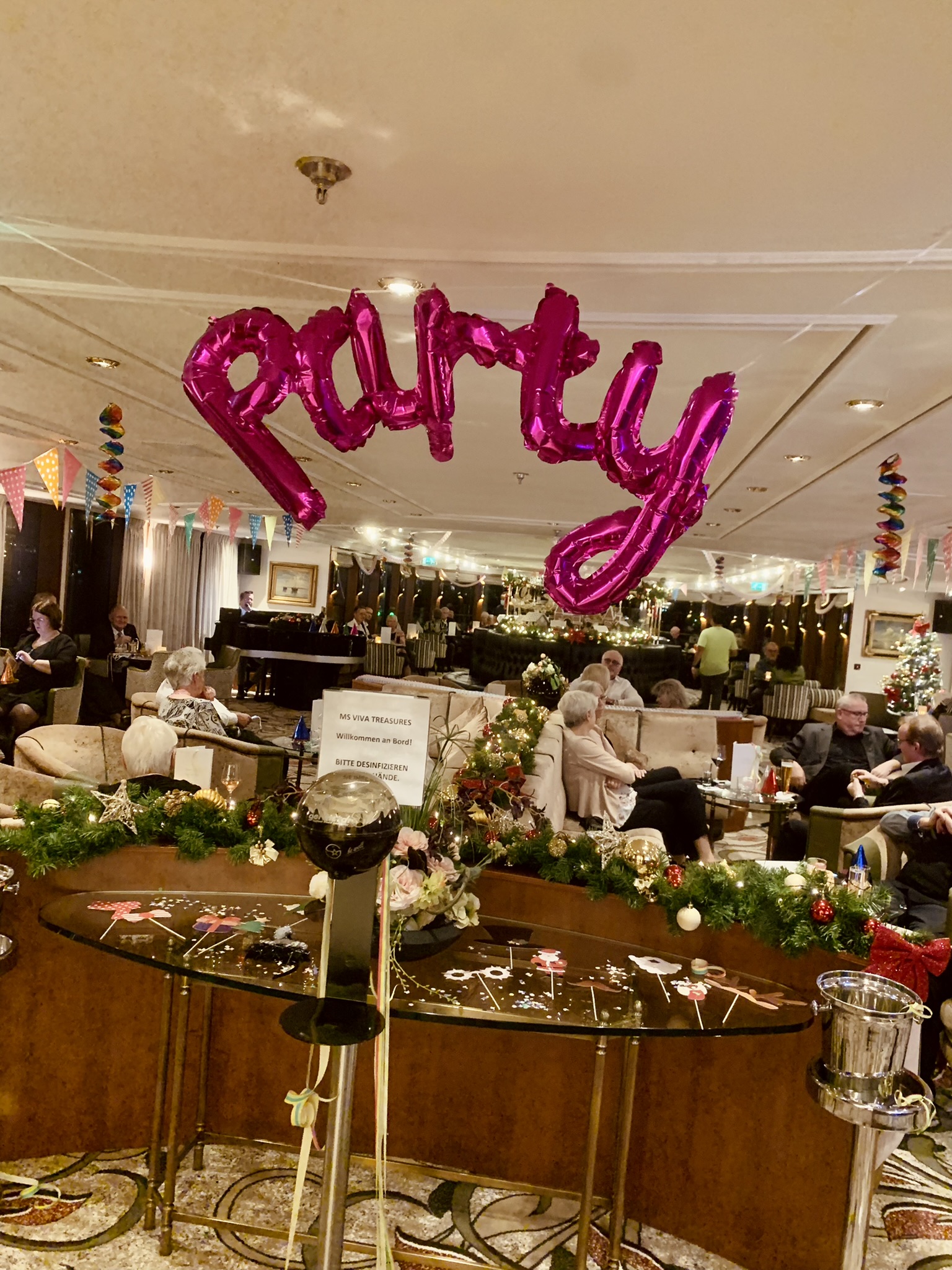Ocean cruisers are trying their first river cruises these days, (one of them being yours truly) and with a good reason. River cruising is the fastest-growing sector of the cruise industry, with more than 10 new ships on order for this year alone. Even though river cruises have been operating for decades, they have come a long way in the past decade. Modern ships with expanded amenities offer intriguing itineraries to places oceangoing vessels just can’t reach, which is tempting fans of seagoing vessels to jump ship.

I’ve been cruising on ocean ships for years now, I’ve cruised on small ships, mega ships and everything in between, but not so long ago I got the opportunity to finally try something new and different… my first river cruise! I honestly didn’t know what to expect because lots of people told me that it’s so different from cruising on big ocean ships… and after two amazing river cruises I have to say that they were right.
So what’s the difference between a river cruise vs. an ocean cruise? Well to say it briefly, it so different that you cannot put it in the same boat! In some ways, river cruising is more similar to a land tour than today’s ocean cruising experience and experienced tour companies run many river lines as well. You’ll find there are better benefits to river cruises than land tours, though, such as only having to pack and unpack once. Mega-ship staples like pools, multiple lounges, specialty restaurants, spas and endless activities are available on some river ships, although on a very, very much smaller scale. And you won’t find any sea days, although there are periods of scenic cruising. Best of all, most river cruises include many inclusions in their fares — making it easier to budget but also making it feel so much more luxurious with that all inclusive atmosphere.
To keep the culture shock at bay and to give you a sense of why you should be thinking about giving a river cruising a try, here’s a list of what you should know before your first river cruise.
1. River ships are smaller.
Ocean ships often carry thousands of passengers, while river ships carry about 150 passengers on average, with some exclusive hotel barges catering for just eight. On the plus side, you won’t be elbowing strangers at the buffet or the gangway, and the atmosphere is quite social so you quickly get to make new friends. As a minus, you can’t blend in with the crowd. The small size of the ship means there is likely just one lounge (maybe two), one main restaurant with a couple of smaller dining venues, and a teeny-tiny spa, gym or computer center, if there is one at all.

2. River cabins are smaller on average.
River ship staterooms are often smaller than they are on ocean ship , but they’re definitely not less luxurious. River ships don’t feature inside cabins and all accommodations face the water. Newer river ships are getting very creative, adding balconies and cleverly designing cabins to make the most of the space onboard. Many have panoramic windows that slide down at the touch of a button to create the feeling of a balcony, even though you can’t actually step outside. They’re even adding suites, with some ships even consisting of mostly suites! Like the last river ship I’ve been on, VIVA TREASURES which had around 50 suites onboard. The cabin which I stayed in was the biggest one I’ve ever had, both on river and ocean ships so if you’re ready to splurge a bit, there are options! I even had a walk in closet, never had that on an ocean ship!


3. Tastier food but fewer restaurants.
If you’ve been spoiled by mega-ships where you can eat dinner in a different restaurant every night during a weeklong cruise, you’ll need an attitude adjustment to embrace river ship dining. Most ships have one main restaurant, and breakfast is often buffet-only (or buffet mainly, with a few items to be ordered a la carte) with a served lunch and evening meal. An increasing number of river ships have intimate secondary venues — some vessels up to four — offering alternative menus and private dining. A handful of lines now provide room service, previously a rarity. To make up for having only one big dining room, ships get creative, spreading casual breakfast and lunch offerings on the bar in the lounge or setting up BBQs out on deck. Plus, the small passenger count and daily port calls mean the venues are better able to bring in fresh ingredients like fish and produce or offer regional specialties at mealtime which you can truly notice. I’ve noticed that on both of my river cruises the food was tastier, fresher and you could truly notice that the quality was on a much higher level than on most ocean ships.


I cannot speak for all river cruise lines, but VIVA cruises, a cruise line I’ve sailed with twice so far and a couple of other river lines that I’ve heard of are great for people with diatery restriction. Especially for people with a lot of food alergies or people who need to follow a strict gluten free diet, because the chefs are truly masters at costumizing each dish to suit everyone’s dietary requirements. On most lines, they have a smaller menu and some pre-prepared dishes for people with dietary restrictions but the food on river ships has always been freshly made and truly exquisite for everyone!
4. Entertainment is low-key.
You’ll find no big production shows on the river … or guest comedians … or acrobatics shows. You will find a lone resident pianist or small ensemble on most ships, plus dancers, singers or other local entertainers brought onboard for a quick evening show. During the day you can expect educational seminars and maybe wine tasting or quiz. With river cruising the passing scenery and destinations visited are the main star of the show, and after a busy day most passengers head for bed rather than stay up into the early hours which younger cruisers might miss.

5. Itineraries can be port-intensive.
Unlike ocean cruises that have leisurely sea days, river cruises are port intensive, and you’ll visit a new destination each day,, sometimes two in one day and up to four countries in a week. The ports, not the ships, are the key attractions, and you will certainly pack a lot of sightseeing into a week or two. This kind of travel can be exhilarating but also exhausting. Bring comfortable shoes, and don’t be embarrassed to take a day off if you’re getting overwhelmed. The tours might be included, but there’s no obligation to go on all of them. Just on the last week long river cruise we got to visit 9 cities.. yes 9 cities in 7 days, not only do you need comfortable shoes, but also some free space in your luggage for all of those souvenires you’re gonna be buying!


6. Different shore experience
The hallmark of the river cruise shore excursion is the walking tour, the kind where you follow a guide with a lollipop sign or umbrella as she mentions all the details of a quaint city’s history and culture, followed by limited free time for shopping or a quick drink in a local cafe. Although you can’t expect a whole booklet of different shore excursions like you’d find on the open ocean, things are changing rapidly. In addition to the traditional walking and bus tours to castles and other places of interest, river cruise lines have introduced options for active travelers, such as guided bicycle rides, hikes, golf, kayaking and even running tours, along with activities including cooking and art classes, music recitals and trips to the ballet or opera.
Some river cruise operators do include shore tours in your cruise fare and some do not. The ones which do not do offer them of course as every other cruise line at a surcharge. Those are of course optional and in my case, unecessary since the ship always docks in the city center, and with all the info that one might need in our phones, I found that the best way to make the most of your stay in each city is to explore on your own and at your own pace! That freedom of self guided exploration is what I love about cruising!

7. No “sea” days
With the exception of particularly scenic stretches of river , such as Germany’s castled Rhine region and Austria’s UNESCO-listed Wachau Valley, full sailing days are a rarity. Generally you’re only on the move for a couple of hours a day. The majority of sailing is done during the late night or very early hours, and you’ll miss most of it. The exception is Portugal’s River Douro, where nighttime navigation is not permitted and ships only sail during daylight hours.

8. A bit more pricey but more is included in your fare.
If you’ve had enough of being nickeled and dimed on cruise ships, you’ll find river cruise fares refreshing … though quite a bit more expensive. Fares will typically include wine, beer and soft drinks with meals, dinner in specialty restaurants, 24-hour tea and coffee, and Wi-Fi. Some lines offer all-inclusive fares covering all drinks, tips, transfers and even a hotel night before your cruise. With fewer onboard attractions to spend money on, you won’t be able to spend a fortune onboard!


9. You’ll dock right in the city center.
Remember those industrial ports full of tankers and long walks on concrete piers that were a big part of your last ocean cruise? In general, you won’t find them on rivers. Instead, your river ship will dock right in town, often a short walk or quick bus ride into the heart of the city. The only downside is that sometimes the berths are all occupied, and your ship will tie up to another ship, and you’ll have to walk through the other vessel’s lobby or sun deck to get ashore (this also affects your view; it can be shocking to open your window and see into another ship). It’s although worth noting that this is one of the aspects that makes river cruising challenging for wheelchair users and travelers with mobility issues.

10. Distances between ports are shorter.
A river ship might need 12 hours to sail a journey that would take you two hours by bus. While this means your entire trip won’t cover as much ground as an ocean cruise, it does mean the cruise staff have a fallback plan if things go wrong. High water levels during very rainy seasons means ships cannot sail beneath bridges, while very low water levels in dry periods means they can’t sail at all. If this happens they’ll put you on a bus to your next port — and keep the itinerary going as planned. Larger lines also have contingency plans to switch passengers to a sister vessel further down the river to keep things running as smoothly as possible.

In conclusion, river cruising is truly so different from ocean cruising, it’s different in so many ways. I honestly didn’t know what to expect and I definitely didn’t expect to love it this much. It is so much more relaxing and slow paced for me in a way. Yes, the itineraries can be a bit more port intensive, but there is no rushing around the huge ship, from show to dinner, from water slides to bumper cars… we all know very well that mad rush to try and do everything a mega ship can offer in one week-long cruise while still trying to explore a new city each day. So for me this was definitely a more relaxing way to explore some parts of the world I could never visit on bigger ships!
Some of you might be put off by the size of the ship thinking you would get bored or just by thinking you wouldn’t fit in with the usual river cruise clientele. But trust me, river cruising is no longer just for older wealthy people, if this 22 year old loved it, I bet some of you would love it too! Most cruise fans who try river cruising just then see what they’ve been missing and the best way to find out is to go on one so… happy river cruising… I know I’m already looking for my next one!
And if you’d like to read more about my most recent river cruise/New Years trip experience from a different perspective…. click HERE!
As always thank you for reading, Dominik.